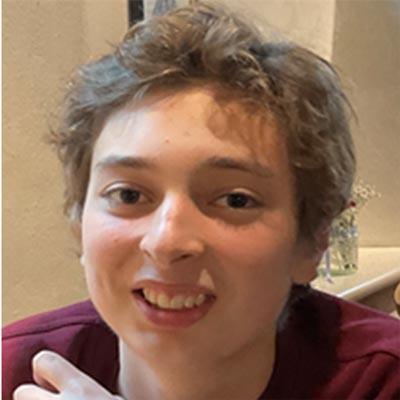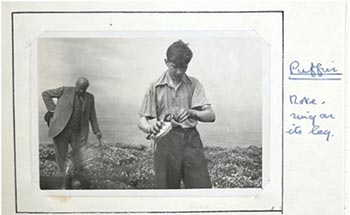Public History internship with the Rowntree Society
Posted on 7 August 2023

Sacha Brozel, second year undergraduate History student
For four weeks this summer, I had the fantastic experience of interning with The Rowntree Society. Based in York, this charity aims to promote research and education about the history of York’s famous confectionery family, ensuring the continued relevance of the Rowntree’s legacy. I was tasked with researching the life of Michael Rowntree, an oft-overlooked member of the Rowntree family. The fruit of this research was to be twofold: a twitter campaign, part of the society’s efforts to increase their social media presence, and a blogpost. My internship naturally divided itself into two stages. The first, archival research, the second, designing the digital showcasing of my work.
Conducting the archival research
Michael Rowntree (1919-2007) was a conscientious objector during World War Two and served in the Friends’ Ambulance Unit. He is best known for his work for Oxfam, where he served on the Executive Committee from 1952 right until the end of his life. However, this left little archival trace in the Rowntree Family Papers, the main archival record of all things Rowntree, held at the Borthwick Institute for Archives, where I conducted most of my research. Instead, my project focused not on Michael’s professional life but rather his lifelong personal passion: birdwatching.
At the Borthwick, Michael’s birdwatching records filled two cardboard boxes, and stretched from 1929 to the last years of his life. At first, I was surprised that the vast majority of physical traces of Michael’s life concerned such an innocuous hobby as birdwatching. This was a topic of which I had zero knowledge or experience, and one which I was slightly concerned I would struggle to relate to current issues. Nonetheless, I was curious to learn more.
The records I looked through quickly enthralled me. There were detailed tables, lists and descriptions of birds seen around York and on various trips around the world. Michael wrote his first birding records when he was just ten years old, on holiday in Palestine with his family. These list 104 different bird species under several categories of ‘residents’, ‘visitors’ and ‘migrants’, recording the different areas he caught sight of each bird. This painstaking attention to detail characterised the entire collection of Michael’s birdwatching documents.
The most impressive record of Michael’s lifelong passion were the diaries he kept of his trips to the Farne Islands (off the coast of Northumberland) in 1934, and Skokholm (an island off the coast of Pembrokeshire) in 1935, when he was 15 and 16 respectively. The journals, which contained pictures of birds and landscapes, were the records where Michael’s voice came through most clearly. The main barrier to Michael’s mental state at the time were no longer his laconic comments, but instead his handwriting - a problem I had not anticipated!

Michael ringing a puffin with his father in the Farne Islands in 1934.
Designing the digital showcase
Designing the twitter campaign presented some challenges for me. Photographing and formatting Michael’s birdwatching journals proved easier than I had feared; instead it was the referencing and crediting images that required greater attention. However, the biggest obstacle proved to be the 280 character limit on twitter posts. This was where the experience of Fiona, the Rowntree Society’s director, and Beth, their social media manager was hugely helpful. Beth encouraged me to use Canva, an online graphic design platform, which helped me let pictures do the talking, whilst Fiona helped cut down on character numbers. I hugely enjoyed the latter stages of editing this campaign, having overcome my slight unease over my inexperience both with Twitter and graphic design.
I found the main difficulty, but also the greatest learning opportunity, was project management - which is a nice way of saying I was my own worst enemy! I often found it difficult to move on from lines of research which, whilst interesting, I knew to be irrelevant. More frustrating was that it was often difficult to tell if a particular document would enhance either my twitter campaign or blog: it was only when I began writing both that things began to fall into place. Thus, the creative licence that I was afforded during the internship proved the greatest challenge, but also a fantastic experience. The importance of consistently re-evaluating the pertinence and direction of my research under time constraints was a key skill which I took away from my internship.
Final thoughts
Overall, the experience I gained from the internship as a second-year undergraduate has been invaluable. As a history student, the opportunity to work for a public history company was extremely enjoyable and rewarding. It has given me a lot to reflect on about my work ethic and approach. I relished the opportunity to work both sides of the equation: the research and the product. I look forward to taking skills from this internship to my future studies.
Bibliography
Michael Rowntree ringing a bird - RFAM/MR/PD/1/3 p.47
Photo courtesy of The Borthwick Institute for Archives.
